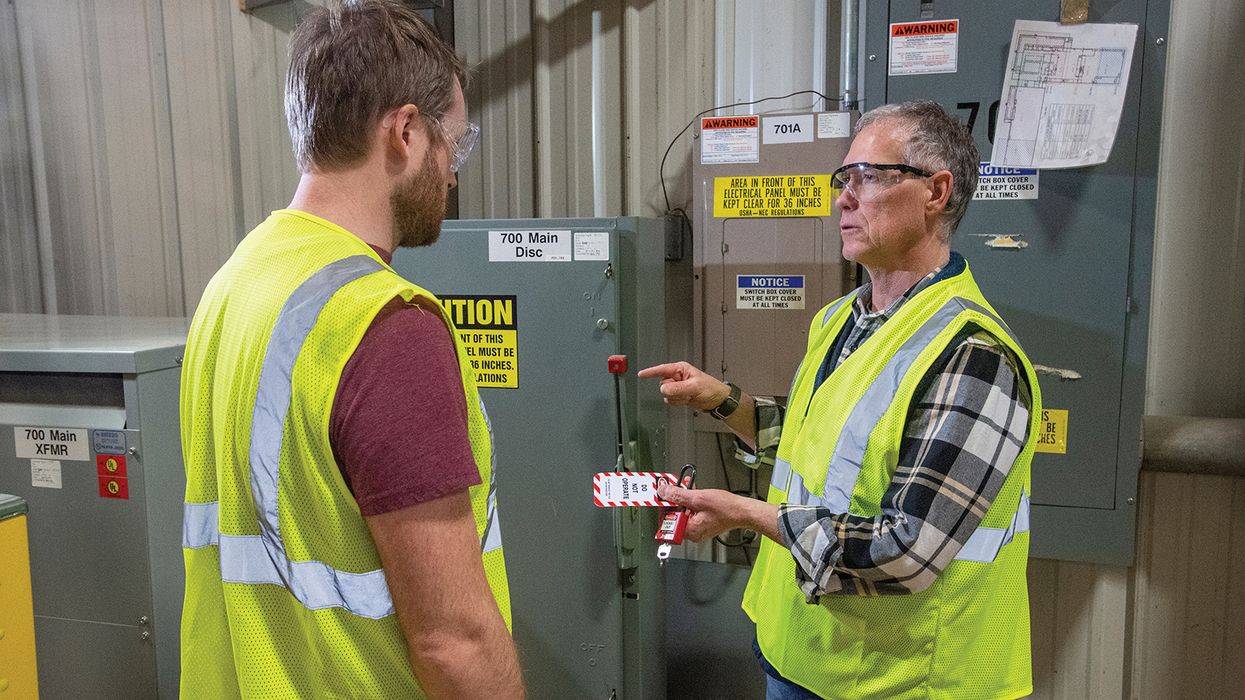Energize your LOTO Procedures
Over the past few years, OSHA has taken steps to enhance worker safety under its lockout/tagout (LOTO) standard. In its Request for Information published in the Federal Register, the Agency began researching whether or not control-circuit devices might be as safe as energy isolating devices – which could affect the way authorized users deenergize equipment and machines.
In the construction industry, LOTO is often necessary for workers to perform service and maintenance on existing machines and equipment. Even with new construction projects, the old systems and facilities have sources of hazardous energy that require LOTO to protect workers during construction activities.
OSHA set up the requirements for controlling hazardous energy, beginning with developing an energy control program. An energy control program consists of energy control procedures, employee training, and periodic inspections to ensure that machines or equipment are isolated from their energy sources during servicing and maintenance activities.
If you operate or use machinery or equipment to which lockout/tagout is applied, or work is an area where lockout/tagout is performed, you need to understand the:
- Procedures involved in lockout/tagout (LOTO),
- Reasons for LOTO, and
- Dangers involved when interfering with LOTO.
There are a wide variety of energy sources that require lockout/tagout to protect authorized employees from the release of hazardous energy:
- Electrical,
- Mechanical,
- Pneumatic (involving gases, especially air),
- Hydraulic (involving fluids),
- Chemical,
- Thermal,
- Water under pressure (steam),
- Gravity, and 9. Potential energy (stored energy).
What is LOTO?
Lockout/tagout is a warning and prevention system for unexpected start-up and the release of stored energy. Here are key definitions:
- Lockout: The placement of a device that blocks the flow of energy from a power source to a piece of equipment.
- Tagout: The process of attaching a tag to a disconnect switch or other energy isolating device to warn others not to restore energy to the tagged equipment.
What is involved in the procedure?
The procedure contains steps for shutting down, isolating, blocking, and securing machines or equipment to control hazardous energy. An orderly shutdown must be used to avoid any additional or increased hazards when the equipment is stopped.
Each piece of equipment or machine needs its own lockout/tagout procedure, which contains the steps for shutting down, isolating, blocking, and securing machines or equipment to control hazardous energy. The procedure also includes testing and verifying the effectiveness of the lockout/ tagout devices and other energy control measures.
The deenergizing procedure
Every power source has its own procedure for lockout. Lockout may be accomplished by pulling a plug, opening a disconnect switch, removing a fuse, closing a valve, bleeding the line, or placing a block in the equipment.
Only the authorized person can perform these:
- Prepare for shutdown;
- Shut down the machine by following the normal method for shutdown;
- Isolate equipment from all energy sources and notify affected employees;
- Using unique locks, lock out all the energy sources involved;
- Release and/or relieve all sources of stored energy; and
- Verify machine has been isolated and deenergized.
Keys to remember
Before working on any electrical system, ensure workers follow LOTO procedures properly to avoid exposure to hazardous energy. Follow deenergizing procedures to ensure workers are safe.

















































